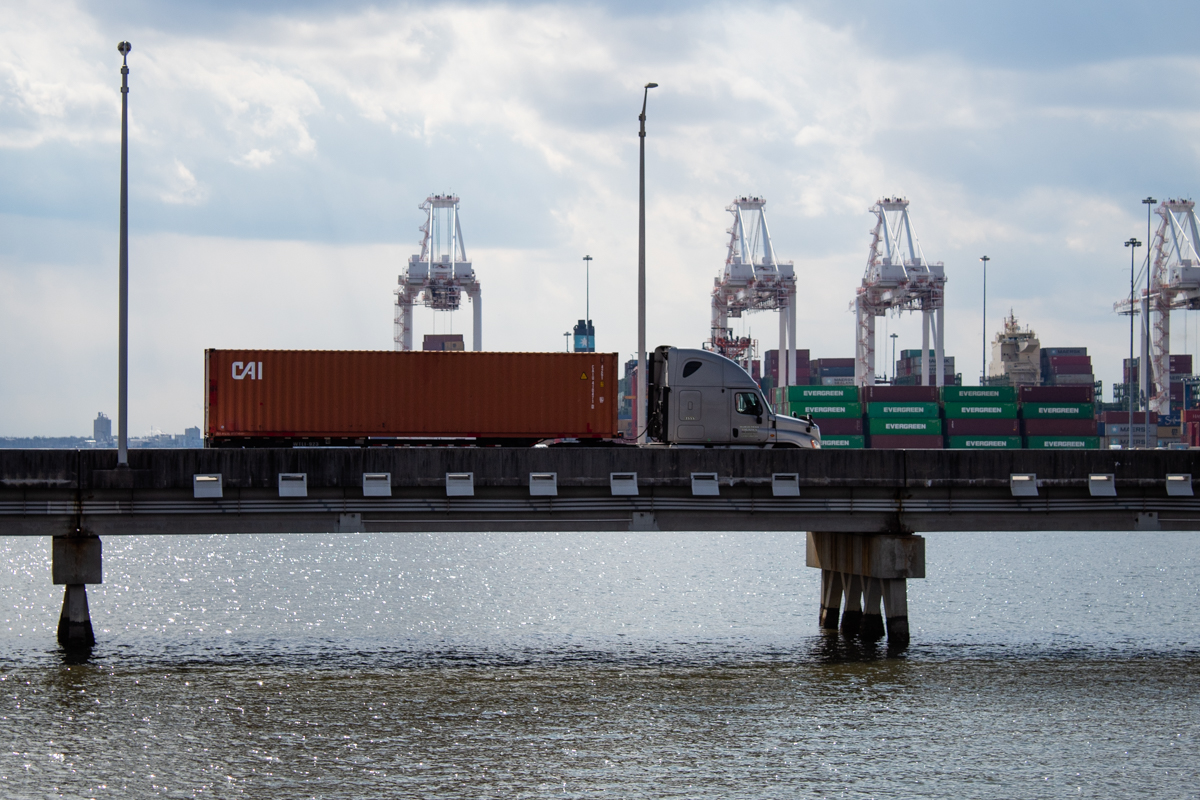BALTIMORE – It is still too early to gauge the impacts of President Donald Trump’s widespread tariffs on imported goods on the Port of Baltimore, despite other ports experiencing changes.
“We expect to see impacts with our container business, especially from China,” Richard Scher, director of communications for the Port Baltimore, said in a statement to Capital News Service. “But those impacts will likely not show until June.”
Tinglong Dai, operations management and business analytics professor at the Johns Hopkins Carey Business School, told CNS that larger ports, like the Port of Los Angeles and the neighboring Port of Long Beach, would experience a much more significant drop in imports compared to the Port of Baltimore because the general volume of imports at the southern California ports is much greater.
Los Angeles and Long Beach also are geographically closer to China, the second-largest source of U.S. imports, and other Asian and South Pacific nations.
On May 12, the United States and China reached an agreement to lower tariffs. Under the new deal, the United States will reduce tariffs on goods imported from China from 145 percent to 30 percent, while China will lower its tariffs on American imports from 125 percent to 10 percent.
“It is important to note that even with this China agreement, tariffs are much higher overall than they were at the beginning of the year,” John Murphy, senior vice president at the U.S. Chamber of Commerce, said in a statement issued after the U.S.-China trade talks. Businesses, including small enterprises, are trying to manage with the disruptions and growing costs, Murphy added.
“We continue to urge the Trump Administration to prioritize tariff relief for businesses and families, and to address foreign trade barriers as it negotiates with other countries,” Murphy said.
“Ultimately, the impact of tariffs on the Port of Baltimore and all ports will depend on the length of time that the tariffs are implemented in addition to the decisions of shippers to send their products to the U.S.,” Scher said.
Last year, the Port of Baltimore was the second-biggest importer of automobiles in the United States. It lost its first place due to the Francis Scott Key Bridge collapse, which paused operations at the port from March to July last year.
Baltimore’s port is one of the only ports in the country to have equipment and facilities to handle and store Roll-On/Roll-Off cargo like fully assembled cars, motorcycles and trucks.
The Port of Baltimore also receives other imports like nuclear reactors, boilers, machinery, aluminum, iron and steel, according to U.S. Census data.
Some auto manufacturing customers that ship into U.S. ports, including Baltimore, are holding their vehicles at the port of entry, while others are adding import fees or absorbing the tariffs, Scher said.
Rep. Johnny Olszewski, D-Maryland, told CNS the tariffs are another setback for the Port of Baltimore, which still is recovering from the bridge collapse.
“It’s challenge after challenge after challenge, except this one is completely avoidable. There’s no reason for the president to need to propose these tariffs,” Olszewki said. “There’s been no good reason expressed to members of Congress or the American people about what the real purpose of a tariff is.”
The congressman said he has not received any complaints or concerns related to the tariffs from individual port workers.
The International Longshoremen’s Association, which represents Baltimore’s port workers, endorsed Trump in last year’s election. ILA President Harold Daggett in January credited Trump with helping the union obtain a new contract with stronger provisions against automation. He called the president “one of the best friends of working men and women in the United States.”
The ILA said it had no comment on the tariffs for now.
Dai said the tariffs would impact port workers and truck drivers in the long run.
The Port of Baltimore is an economic engine that would have a direct and indirect impact on all the sectors and workers supporting it, Dai said.
“It’s an entire ecosystem,” he said.

